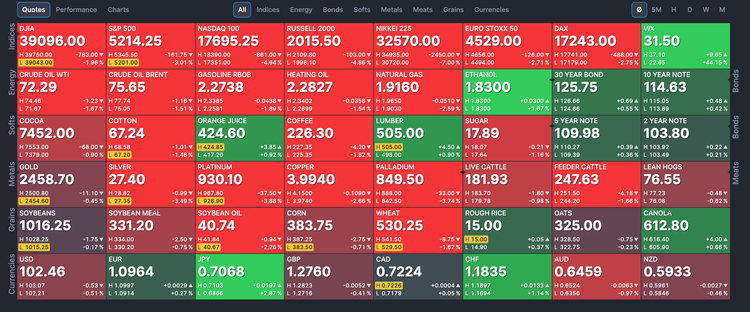Maximizing Gains and Minimizing Losses: Lessons from My COST Call Options Trade

After my successful, and dare I say lucky COST call trade, I decided that lightning would indeed strike twice because that trade was so damn easy. I bought another COST call option, this one expiring May 17, 2024, with a strike price of $750. I purchased 5 contracts at $15.93 per contract, totaling $7,965. At the time, COST was trading around $739.

Initially, only a little price action happened to the stock price and the value of the option. My theta was decaying slowly, and the option’s value began to decline. I started thinking about how to unwind this trade and came up with an arbitrary reason to sell the calls. I decided, “If nothing moves before 21 days of expiration, then sell.”
I followed my plan and, on April 26, 2024, sold my contracts for an average of $5.75 each. My loss on that trade was $5,093, with COST trading at $729. Considering my first COST call trade made a profit of $5,152, the two trades canceled each other out. After fees, I made a bit of beer money—a nice consolation, but not what I hoped for.
Lessons Learned and Strategy Refinement
Lo and behold, the market wasn’t done sticking it to me. COST price action shot up on May 6, 2024, just 11 days from expiration! On the day of expiration, COST was trading around $795. The options I had sold were way in the money by then.
C’est La Vie.
The moral of the story is that I need to develop good option trading rules and wait to roll or close trades closer to expiration than I did. This experience taught me several valuable lessons:
- Patience is Key: In options trading, timing is everything. Selling too early or too late can significantly impact your returns. It's crucial to have a well-thought-out strategy and stick to it, rather than making arbitrary decisions.
- Understanding Theta Decay: The time decay of options, known as theta, plays a significant role in the value of options. Recognizing how theta affects your positions can help in planning your trades more effectively.
- Market Movements are Unpredictable: Even with careful planning, the market can behave unpredictably. Being prepared for sudden changes and having a risk management strategy in place can help mitigate losses.
- Consistent Strategy Development: Developing and sticking to a consistent trading strategy is essential. This includes setting clear rules for when to enter and exit trades, as well as having predefined criteria for managing risk.
Reflecting on these lessons will help refine my approach to trading options, aiming for more consistent and profitable outcomes in the future.
Get more with Premium







Member discussion